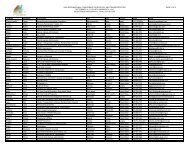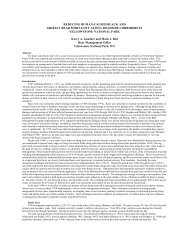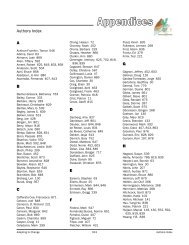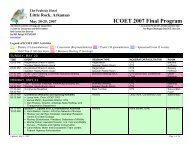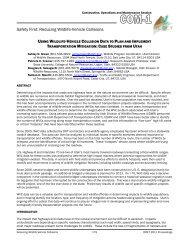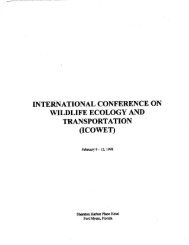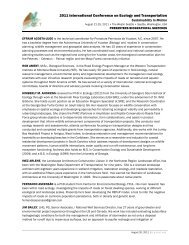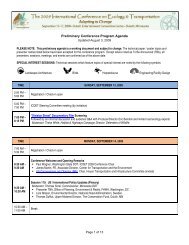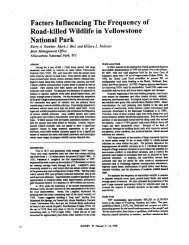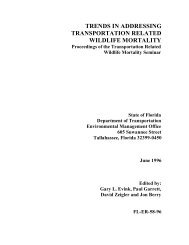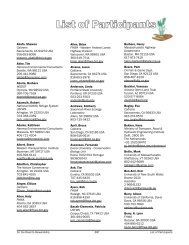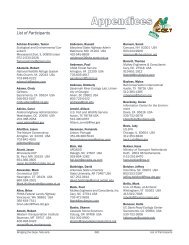Poster Sessions, pages 567-640 - ICOET
Poster Sessions, pages 567-640 - ICOET
Poster Sessions, pages 567-640 - ICOET
Create successful ePaper yourself
Turn your PDF publications into a flip-book with our unique Google optimized e-Paper software.
Abstract<br />
A Review of the Broad Effects Generated by Roads on Herpetofauna<br />
Denim M. Jochimsen (208-244-1336, denim2cure@yahoo.com), School of Biological Sciences,<br />
Washington State University, P.O. Box 644236, Pullman, WA 99164-4236 USA<br />
Although, several reviews, bibliographies, and texts describing the effects of roads on natural systems have been<br />
published, amphibian and reptile taxa remain underrepresented.<br />
An array of studies document that roads generate ecological disturbance and destruction at multiple scales across<br />
the landscape. As conflicts between roads and wildlife become increasingly common, experts seek to understand the<br />
interactions in the search for solutions. Although, several reviews, bibliographies, and texts describing the effects of<br />
roads on natural systems have been published (Andrews 1990, Forman and Alexander 1998, Trombulak and Frissell<br />
2000, Forman et al. 2003, White and Ernst 2003) amphibian and reptile taxa remain underrepresented. The extent<br />
of the direct and indirect effects of roads on these species has been revealed in numerous studies, with excessive<br />
rates of mortality (thousands) documented, and changes in behavior, movement, survival, growth, and reproductive<br />
success of individual animals reported. Cumulatively, effects may incur population-level consequences, or influence<br />
the overall species richness and diversity in an area. The goals of this presentation are to: 1) provide examples of<br />
physiological, ecological, and behavioral traits inherent among herpetofauna that enhance their susceptibility to<br />
environmental changes associated with development and roads, 2) summarize the prevalence of direct mortality data<br />
for herpetofauna, 3) identify the diversity of indirect effects documented in the literature, 4) infer larger-scale impacts<br />
on population and community levels, 5) recommend areas of future research that are to date undocumented, but for<br />
which herpetofauna are likely susceptible, and 6) present proactive approaches for addressing conflicts.<br />
<strong>Poster</strong>s 606 <strong>ICOET</strong> 2007 Proceedings



